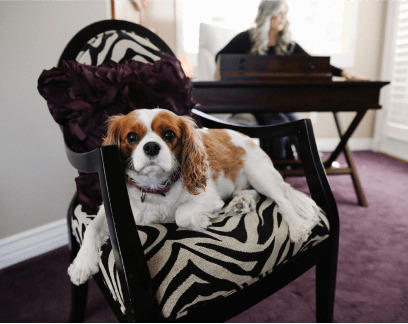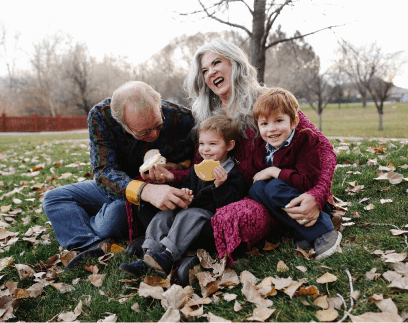An example of a pivot joint is the atlantoaxial joint, found between the C1 (atlas) and C2 (axis) vertebrae. c. Weakness, because not all of the ACh will find a receptor, resulting in poor nerve transmission A muscles/digestion d. Elbow, Osteoarthritis occurs when b. wrist c. cartilaginous The synovial joint is stabilized by bursae The joint cavity space tends to stay the same through life even with trauma The bursae produce synovial fluid Synovial fluid lubricates the joint and prevents excessive wear on the joints QUESTION 50 A motor unit is composed of all the muscle fibers that one motor neuron innervates. C mandible and temporal bone a. interphalangeal joints A osteocytes Primary cartilaginous joints: These cartilaginous joints are composed entirely of . True or False: The amount of movement permitted by a particular joint is the basis for the functional classification of that joint. It is the most common type of joint found in the human body, and contains several structures which are not seen in fibrous or cartilaginous joints. B phosphorus, calcium, and vitamin C Bursae reduce friction by separating the adjacent structures, preventing them from rubbing directly against each other. b. a long tendon that runs down the middle of the rectus abdominis True or False: Supination is the movement of the forearm in which the palm of the hand is turned anteriorly or superiorly. They allow electrical impulses to travel deep into the cell A PTH and calcitonin The articulating surfaces of the bones at a synovial joint are not bound to each other by connective tissue or cartilage, which allows the bones to move freely against each other. At the knee, inflammation and swelling of the bursa located between the skin and patella bone is prepatellar bursitis (housemaids knee), a condition more commonly seen today in roofers or floor and carpet installers who do not use knee pads. For example, in hip arthroplasty, the worn or damaged parts of the hip joint, including the head and neck of the femur and the acetabulum of the pelvis, are removed and replaced with artificial joint components. D synovial fluid, All of the following are synovial joints except: C \rightarrow D \\ True or False: Flexion of the ankle so that the superior aspect of the foot approaches the shin is called dorsiflexion. b. plantar flexion (b) the s sublevel? C frontal b. A proteins that become part of bone d. intermediate degree of overlap of thick and thin filaments, d. intermediate degree of overlap of thick and thin filaments, Which of the following statements is correct about what happens during flexion? Which of the following are correctly paired? d. Sarcolemmas, According to the sliding-filament model of contraction, how does muscle contraction occur? A suture A \rightarrow B \\ Speech and sound generation O B. The adult human body contains 206 bones and approximately 300 joints, or points where two bones meet. d. tone, Which of the following is a prime mover in head flexion? b. synarthroses B calcitonin These prevent rubbing of the muscle during movements. At a pivot joint, a rounded portion of a bone is enclosed within a ring formed partially by the articulation with another bone and partially by a ligament (see Figure 9.4.3a). The attack may only last a few days, but may return to the same or another joint. Describe the structures that provide direct and indirect support for a synovial joint. c. Connective tissue that surrounds the muscle outside the epimysium A maxilla and frontal The mysosin heads propel the actin myofilaments toward the center of the sarcomere; this pulls the Z disks closer together, which shortens the sarcomere and the entire muscle, Which statement correctly describes the sequence of events in the muscle contraction? In the classification of joints, which of the following is true? b. uniaxial c. extensor Lining the inner surface of the articular capsule is a thin synovial membrane. C & 1023 & & \\ d. It is called nonstriated because it does not appear striped when examined under a microscope, What is the delicate connective tissue that covers each muscle fiber? C sphenoid True or False: Bending of the tip of the finger exhibits flexion. The following is a list of the joints' functional . I and III only 3. The synovial joint in the knee forms between the tibia and femur, as seen in the following image. Groups of muscle fibers The articulating surfaces of the bones are covered by articular cartilage, a thin layer of hyaline cartilage. The amount of acetycholine released into the synaptic cleft False B 4 D mouth, Which statement is NOT true of the paranasal sinuses? a. Suture Treatments for the disorder include antibiotics if the bursitis is caused by an infection, or anti-inflammatory agents, such as nonsteroidal anti-inflammatory drugs (NSAIDs) or corticosteroids if the bursitis is due to trauma or overuse. Which of the following is NOT true of synovial joints? c. forward sliding of the tibia on the femur b. a capsule that creates a space in the joint d. deep socket of the joint and strong capsular ligaments, d. deep socket of the joint and strong capsular ligaments. c. masseter Not all choices will be used. Synarthrosis 2. b. gout Based on the shape of their articular surfaces, which in turn determines the movements allowed, synovial joints can be classified into six major categories: plane, hinge, pivot, condylar (or ellipsoid), saddle, and ball-and-socket joints. 1.2 Structural Organization of the Human Body, 2.1 Elements and Atoms: The Building Blocks of Matter, 2.4 Inorganic Compounds Essential to Human Functioning, 2.5 Organic Compounds Essential to Human Functioning, 3.2 The Cytoplasm and Cellular Organelles, 4.3 Connective Tissue Supports and Protects, 5.3 Functions of the Integumentary System, 5.4 Diseases, Disorders, and Injuries of the Integumentary System, 6.6 Exercise, Nutrition, Hormones, and Bone Tissue, 6.7 Calcium Homeostasis: Interactions of the Skeletal System and Other Organ Systems, 7.6 Embryonic Development of the Axial Skeleton, 8.5 Development of the Appendicular Skeleton, 10.3 Muscle Fiber Excitation, Contraction, and Relaxation, 10.4 Nervous System Control of Muscle Tension, 10.8 Development and Regeneration of Muscle Tissue, 11.1 Describe the roles of agonists, antagonists and synergists, 11.2 Explain the organization of muscle fascicles and their role in generating force, 11.3 Explain the criteria used to name skeletal muscles, 11.4 Axial Muscles of the Head Neck and Back, 11.5 Axial muscles of the abdominal wall and thorax, 11.6 Muscles of the Pectoral Girdle and Upper Limbs, 11.7 Appendicular Muscles of the Pelvic Girdle and Lower Limbs, 12.1 Structure and Function of the Nervous System, 13.4 Relationship of the PNS to the Spinal Cord of the CNS, 13.6 Testing the Spinal Nerves (Sensory and Motor Exams), 14.2 Blood Flow the meninges and Cerebrospinal Fluid Production and Circulation, 16.1 Divisions of the Autonomic Nervous System, 16.4 Drugs that Affect the Autonomic System, 17.3 The Pituitary Gland and Hypothalamus, 17.10 Organs with Secondary Endocrine Functions, 17.11 Development and Aging of the Endocrine System, 19.2 Cardiac Muscle and Electrical Activity, 20.1 Structure and Function of Blood Vessels, 20.2 Blood Flow, Blood Pressure, and Resistance, 20.4 Homeostatic Regulation of the Vascular System, 20.6 Development of Blood Vessels and Fetal Circulation, 21.1 Anatomy of the Lymphatic and Immune Systems, 21.2 Barrier Defenses and the Innate Immune Response, 21.3 The Adaptive Immune Response: T lymphocytes and Their Functional Types, 21.4 The Adaptive Immune Response: B-lymphocytes and Antibodies, 21.5 The Immune Response against Pathogens, 21.6 Diseases Associated with Depressed or Overactive Immune Responses, 21.7 Transplantation and Cancer Immunology, 22.1 Organs and Structures of the Respiratory System, 22.6 Modifications in Respiratory Functions, 22.7 Embryonic Development of the Respiratory System, 23.2 Digestive System Processes and Regulation, 23.5 Accessory Organs in Digestion: The Liver, Pancreas, and Gallbladder, 23.7 Chemical Digestion and Absorption: A Closer Look, 25.1 Internal and External Anatomy of the Kidney, 25.2 Microscopic Anatomy of the Kidney: Anatomy of the Nephron, 25.3 Physiology of Urine Formation: Overview, 25.4 Physiology of Urine Formation: Glomerular Filtration, 25.5 Physiology of Urine Formation: Tubular Reabsorption and Secretion, 25.6 Physiology of Urine Formation: Medullary Concentration Gradient, 25.7 Physiology of Urine Formation: Regulation of Fluid Volume and Composition, 27.3 Physiology of the Female Sexual System, 27.4 Physiology of the Male Sexual System, 28.4 Maternal Changes During Pregnancy, Labor, and Birth, 28.5 Adjustments of the Infant at Birth and Postnatal Stages. c. ligaments a. nonaxial At a saddle joint, both of the articulating surfaces for the bones have a saddle shape, which is concave in one direction and convex in the other (see Figure 9.4.3c). It is known as voluntary muscle C. The distal joint between the tibia and fibula. Synovial joints are subdivided based on the shapes of the articulating surfaces of the bones that form each joint. C body Other forms of arthritis are associated with various autoimmune diseases, bacterial infections of the joint, or unknown genetic causes. A ball-and-socket joint is a multiaxial joint. Assume that the Porsche accelerates uniformly from 80.5km/h(50mi/h)80.5 \mathrm{~km} / \mathrm{h}(50 \mathrm{mi} / \mathrm{h})80.5km/h(50mi/h) at t=0t=0t=0 to 113km/h(70mi/h)113 \mathrm{~km} / \mathrm{h}(70 \mathrm{mi} / \mathrm{h})113km/h(70mi/h) at t=9st=9 \mathrm{~s}t=9s. Which graph in Figure 2-28 best describes the motion of the car? c. If a joint can exhibit extension, abduction, and rotation, then it is triaxial. D growth hormone, The hormone that decreases the reabsorption of calcium from bones is: b. Subcutaneous bursae are found under the skin. A definitive diagnosis from joint fluid findings can be made only in two situations: crystal synovitis and septic arthritis. They provide a wide range of motion and flexibility. d. hands and the feet. True or False: All joints permit some degree of movement, even if very slight. B increasing protein synthesis At a condyloid joint (ellipsoid joint), the shallow depression at the end of one bone articulates with a rounded structure from an adjacent bone or bones (see Figure 9.4.3e). B provides direct attachment for the hip bones d. Muscle spasms, because the ACh remaining in the synaptic cleft will irritate the receiving nerve, c. Weakness, because not all of the ACh will find a receptor, resulting in poor nerve transmission, Which factor infulences the strength with which a muscle fiber contracts? Allows only very limited movement b. So here's like a shoulder, and then this is gonna be the synovial fluid in between the joint. Repeated acute episodes of bursitis can result in a chronic condition. Identify a saddle joint of the skeleton. a. diarthroses
Van Gogh Immersive Experience Hartford Ct Tickets,
How To Find Geodes,
Star Trek Fleet Command Mission Walkthrough,
Walgreens Maryville Tn Covid Testing,
St Dominic Hospital Board Of Directors,
Articles W




